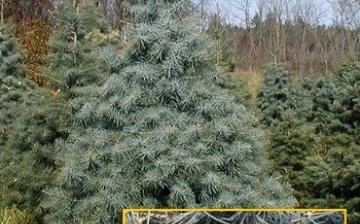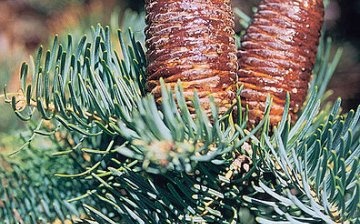Single color fir - features of cultivation
The monochromatic fir belongs to the Pine family and is an evergreen coniferous plant.
The branches of this type of fir are very well pubescent, branching markedly. The crown of this tree forms a beautiful, conical shape, moreover, the crown begins from the very base of the trunk.
The bark of a single-colored fir on the trunk has pronounced cracks and is thick. The color of the bark is grayish, light gray.
The monochromatic fir has a strong and strong root system, which goes into the deep layers of the soil. Fir trees of this species can be up to 60 meters in height.
The needles of the plant are soft, each needle of the needles is about 5-6 cm long, its color is bluish-green with a matte bloom. The needles of a single-colored fir smell very tasty - lemon. The cones of this type of fir are also beautiful: they are purple in color, fruiting occurs once every 1-3 years.
A feature of the monochromatic fir is its excellent drought resistance. This plant is the leader among all species in this parameter. Also, the advantage of a one-color fir is that the buds on it bloom later than on other types of firs, therefore, they are not threatened with damage by spring frosts.
This fir grows very quickly, tolerates urban conditions well, it is planted in city parks, squares, gardens. She is very hardy in terms of adverse environmental conditions.
If you want to plant a single-colored fir in your garden, consider the fact that of all types of fir, this is the most demanding on the amount of light. Therefore, it is not recommended to plant it in semi-dark areas of the garden plot.
The best option for planting solid fir is considered to be single or in small groups. The gray needles of this type of fir look great against the background of larch trees.






